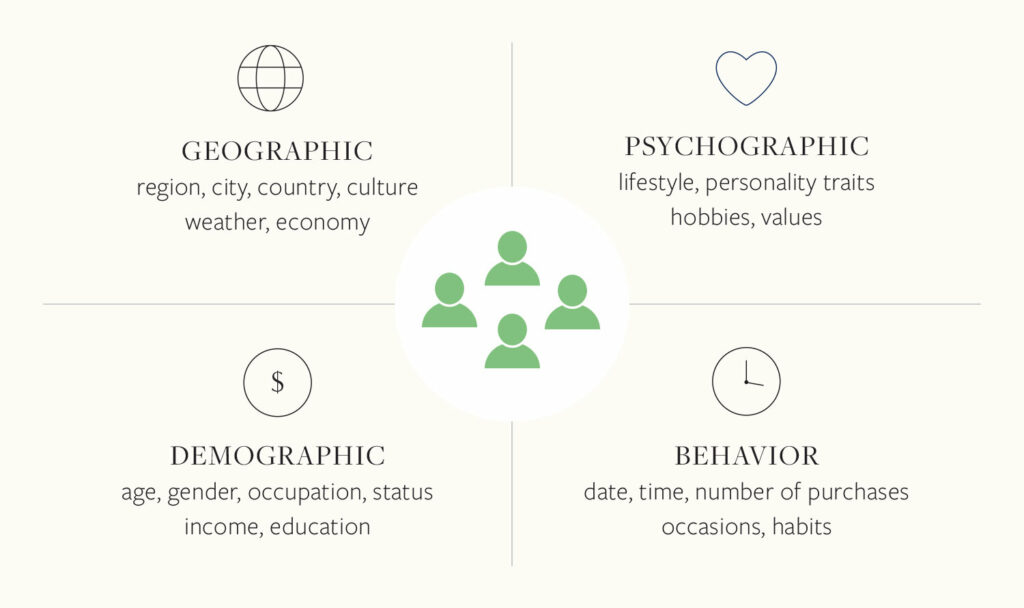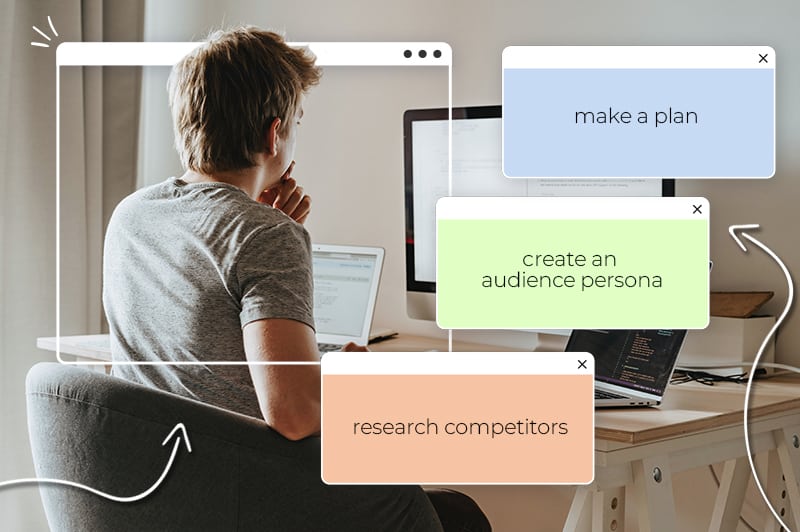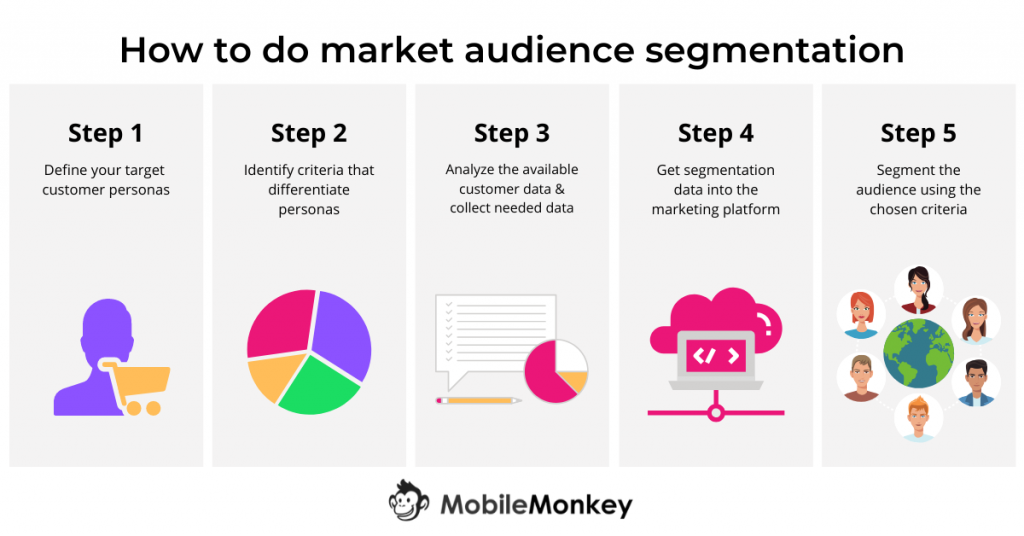Audience targeting is akin to an intricate dance, a twirl of relevance and resonance that connects your brand to the right people at the right time.
This adventure in marketing isn’t just about reaching an audience; it’s about reaching the people who will truly value what you offer. It’s the difference between shouting into the wind and having a meaningful dialogue.
In the puzzling world of marketing, audience targeting is your decoder ring, your secret cipher.
It’s the process of dividing your wider audience into segments based on characteristics like age, location, interests, and more. It’s about understanding your audience’s needs, preferences, and behaviors so you can create messages that truly resonate.
In the realm of marketing, audience targeting is the road less traveled that can make all the difference.
It’s not just about boosting conversion rates and enhancing ROI, although it certainly can help with those. Audience targeting is also about building authentic relationships with your audience and cultivating brand loyalty that can last a lifetime.
Common Mistakes to Avoid in Audience Targeting
Even seasoned marketers can make missteps in audience targeting. Some focus too much on demographics and ignore psychographics, while others target too broadly or too narrowly. We’ll cover a few of these pitfalls in this post.
Avoiding these common mistakes can help you chart a more effective and efficient course toward your marketing goals.
The Hazards of Ignoring Demographics and Psychographics
Demographics and psychographics are like the yin and yang of audience targeting. Ignore one, and you’re only seeing half the picture. It’s like chasing shadows, a futile effort that can leave you stumbling in the dark.
By considering both, you can illuminate your audience’s understanding and pave the way for more targeted, relevant campaigns.
The Risks of Overly Broad Audience Targeting
Targeting too broadly is like trying to shout in a bustling crowd. Your message likely won’t be heard by those who matter. While it might be tempting to reach as many people as possible, overly broad targeting can dilute your message, resulting in lower engagement and conversion rates.
Essential Tools for Audience Targeting
Before you can effectively target your audience, you’d need to have some ‘tools’ and ‘resources’ under your belt.
In other words, you’d need to implement specific strategies that’ll help you better identify your ideal customers and reach out to them. We’ll cover a few.
Market Segmentation
Market segmentation is your map through the maze of audience targeting. It’s a strategic approach that involves dividing your broad audience into smaller, more manageable segments based on shared characteristics.
It’s the first step toward creating a targeted and tailored marketing campaign.
Understanding Consumer Behavior
In the game of audience targeting, understanding consumer behavior is like playing Sherlock Holmes. It involves digging into your audience’s preferences, behaviors, and buying patterns, unearthing clues that can help you craft a message that hits the mark.
Leveraging Social Media Analytics
Social media analytics offers a glimpse into your audience’s online behavior, from their likes and shares to their comments and follows.
This data can offer invaluable insights, helping you refine your strategy and connect more deeply with your audience.
The Power of Surveys and Interviews
Surveys and interviews are like brewing a perfect potion. They mix the vital ingredients of direct feedback and personal insight, creating a potent broth that can enhance your understanding of your audience.
This knowledge is potent, providing the insights needed to craft more targeted and effective marketing campaigns. These days, AI is making things relatively easier to implement proper audience targeting techniques.
Crafting Your Own Audience Targeting Strategy
By understanding your target audience and tailoring your messages to their specific needs and preferences, you can maximize engagement, conversions, and, ultimately, business growth.
Here are some key steps to consider when crafting your own audience-targeting strategy:
1. Define Your Target Audience

Start by clearly defining who your ideal audience is. Consider demographics, interests, behaviors, and psychographics that align with your product or service. Conduct market research and analyze existing customer data to gain insights into their characteristics and preferences.
2. Conduct Audience Research

Dive deeper into understanding your audience by conducting thorough research. Utilize AI tools, surveys, focus groups, and social media analytics to gather valuable data. Explore their pain points, motivations, and desires to identify common patterns and uncover hidden opportunities.
3. Segment Your Audience

Once you have gathered data, segment your audience into distinct groups based on shared characteristics or behaviors. This allows for more targeted messaging and personalized campaigns. Use AI-driven customer segmentation tools to automate this process and identify unique segments that may have been previously overlooked.
4. Develop Buyer Personas
Create detailed buyer personas that represent each audience segment. These personas should encompass demographics, motivations, goals, challenges, and preferred communication channels. They serve as a reference point for crafting tailored messages and content that resonate with each persona.
5. Utilize AI Tools for Insights
Leverage AI-powered tools and platforms to gain deeper insights into your target audience. AI-driven analytics can help uncover trends, preferences, and patterns that may inform your targeting strategy. Social listening tools, sentiment analysis, and predictive analytics can provide valuable data for refining and optimizing your campaigns.
6. Test and Refine
Implement your audience targeting strategy and continuously test and refine it. Analyze campaign performance, track key metrics, and gather feedback to understand what works and what needs improvement. Adjust your messaging, channels, or targeting parameters accordingly to optimize results.
7. Monitor and Adapt
Audience preferences and market dynamics evolve over time. Stay vigilant and monitor changes in your audience’s behavior, preferences, and competitors’ strategies. Use AI tools to keep track of emerging trends and adapt your targeting strategy to stay ahead of the curve.
Remember, audience targeting is an ongoing process that requires constant evaluation and adaptation.
By employing a combination of data-driven insights, AI tools, and human creativity, you can craft an audience targeting strategy that effectively reaches and engages your intended audience, ultimately driving business success.
Let B2B Content Marketing Agencies do Your Target Audience
As we’ve mentioned earlier, you can do your own audience targeting. But that’s not always the smartest thing to do, and for a few reasons;
1. You don’t have the expertise
True, you may learn the basics of audience targeting. You may even take a few courses to understand how audience targeting works.
But believe it or not, running your business is what you’re best at, not doing audience targeting.
With audience targeting, many things could go wrong, and that leads to the second point…
2. You’ll waste resources
If you don’t target well, you risk wasting time, money, and effort on the wrong audience. Obviously, the effects will be a low return on investment (ROI).
3. You’ll also miss opportunities
The audience targeting you do on your own may yield some results. But normally when non-experts do audience targeting, their best results are half of the potential returns they would if they hired an expert.
There are many more that may go amiss when you do your own audience targeting. That’s why we recommend that you hire B2B marketing agency to handle your targeting.
Why Choose Flying V Group
We strongly recommend considering Flying V Group for your audience targeting needs.
Our proven track record in digital marketing, combined with a highly skilled team, ensures that your message is precisely delivered to the right audience at the most opportune moments.
With data-driven strategies and advanced tools, we optimize your marketing efforts to yield the best possible return on investment.
When you entrust your audience targeting to us, you can confidently focus on your core business operations while benefiting from our expertise to drive significant growth and success.
The Fluidity of Target Audiences
In the end, audience targeting is an ode to change, a tribute to the fluidity of target audiences.
It’s about understanding and embracing this fluidity, using it to guide your strategies and actions. It’s about celebrating the dynamic nature of your audience and using it to build meaningful and lasting connections.
So, here you are at the start of your audience targeting journey. It’s a path filled with challenges and opportunities, trials and triumphs. But with the right tools, str
Bon voyage on your journey in audience targeting! May it lead you to greater engagement, deeper connections, and outstanding marketing success.






0 Comments